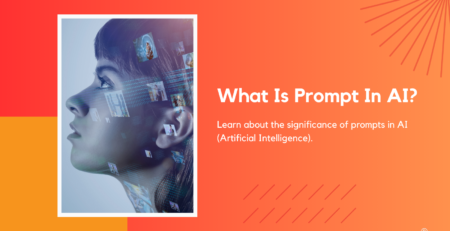How AI Stock Trading Automation with Grok 4 is Revolutionizing Investment Strategies: 10 Essential Prompts for Profitable Trading
Introduction: The AI Revolution in Stock Trading
The financial markets are experiencing a paradigm shift as artificial intelligence transforms how investors approach stock trading. AI stock trading automation has evolved from a privilege of institutional investors to an accessible tool for individual traders worldwide. With advanced AI models like Grok 4 leading the charge, retail investors now have unprecedented access to sophisticated trading strategies that were once exclusive to Wall Street firms.
The integration of AI in stock trading isn’t just about replacing human judgment—it’s about augmenting human intelligence with computational power that can process vast amounts of market data, identify patterns invisible to the naked eye, and execute trades with precision and speed that surpasses human capabilities. This technological evolution represents a fundamental shift in how we approach investment strategies and portfolio management.
Understanding how to leverage AI effectively in stock trading has become crucial for modern investors. The key lies not just in having access to powerful AI tools like Grok 4, but in knowing how to communicate with these systems through well-crafted prompts that unlock their full potential for financial analysis and decision-making.
Understanding AI Stock Trading Automation
AI stock trading automation represents the convergence of artificial intelligence, machine learning, and financial markets. This sophisticated approach to investing utilizes algorithms and neural networks to analyze market data, identify trading opportunities, and execute transactions with minimal human intervention. The technology encompasses various methodologies, from simple rule-based systems to complex deep learning models that adapt and evolve with market conditions.
The foundation of effective AI trading lies in data processing capabilities. Modern AI systems can simultaneously analyze thousands of variables including price movements, trading volumes, news sentiment, economic indicators, social media trends, and global events. This comprehensive analysis enables the identification of subtle market patterns and correlations that human traders might miss or take hours to discover.
Machine learning algorithms form the backbone of AI trading systems, continuously learning from historical data and market outcomes to improve their predictive accuracy. These systems can identify recurring patterns, seasonal trends, and market anomalies that provide competitive advantages in trading decisions. The self-improving nature of these algorithms means they become more sophisticated and accurate over time.
Grok 4 stock trading capabilities extend beyond traditional algorithmic trading by incorporating natural language processing and contextual understanding. This allows traders to interact with the AI using conversational prompts rather than complex programming languages, democratizing access to advanced trading strategies for investors without technical backgrounds.
The 10 Essential Grok 4 Prompts for Stock Trading Success
1. Market Analysis Prompt
Automated investment strategies begin with comprehensive market analysis. The market analysis prompt for Grok 4 should be structured to provide holistic market insights that inform trading decisions.
Optimal Prompt Structure: “Analyze the current market conditions for [specific sector/stock] considering the following factors: recent price movements, trading volume patterns, institutional investor activity, analyst ratings changes, and correlation with major market indices. Provide a comprehensive assessment including potential catalysts, resistance and support levels, and recommended position sizing based on current volatility metrics.”
This prompt engages Grok 4’s analytical capabilities to process multiple data streams simultaneously, providing insights that would typically require hours of manual research. The AI can identify market trends, sector rotations, and individual stock performances while considering broader economic contexts that influence trading decisions.
The effectiveness of market analysis prompts lies in their specificity and comprehensive scope. By requesting analysis of multiple factors simultaneously, traders can obtain a 360-degree view of market conditions that informs both short-term trading decisions and long-term investment strategies.
2. Portfolio Diversification Prompt
Effective automated portfolio management requires sophisticated diversification strategies that balance risk and return across multiple asset classes, sectors, and geographic regions.
Strategic Diversification Prompt: “Design an optimal portfolio allocation strategy for a [risk tolerance level] investor with [investment amount] considering current market conditions. Include recommendations for sector diversification, geographic allocation, market cap distribution, and alternative investments. Factor in correlation coefficients between asset classes and provide rebalancing triggers based on deviation thresholds.”
This prompt leverages Grok 4’s ability to process complex mathematical relationships between different investments while considering individual risk profiles and market conditions. The AI can calculate optimal allocation percentages based on modern portfolio theory while adapting recommendations to current market dynamics.
Portfolio diversification through AI eliminates emotional bias and ensures systematic approach to risk management. The AI can continuously monitor portfolio balance and suggest rebalancing actions when allocations drift beyond predetermined parameters.
3. Risk Management Prompt
AI market analysis excels in risk assessment and management, providing systematic approaches to protecting capital while maximizing returns.
Comprehensive Risk Assessment Prompt: “Evaluate the risk profile of my current portfolio positions including [list positions] and provide risk management recommendations. Calculate portfolio beta, value at risk (VaR), maximum drawdown potential, and correlation risks. Suggest stop-loss levels, position sizing adjustments, and hedging strategies using options or inverse ETFs based on current market volatility and my risk tolerance of [percentage].”
Risk management represents one of the most critical applications of AI in trading. Grok 4 can process complex risk metrics and provide actionable recommendations that protect capital during market downturns while maintaining upside potential during favorable conditions.
The AI’s ability to continuously monitor risk metrics and adjust recommendations based on changing market conditions provides a dynamic risk management framework that adapts to evolving market environments.
4. Technical Analysis Prompt
Algorithmic trading relies heavily on technical analysis patterns and indicators that can be systematically identified and analyzed by AI systems.
Advanced Technical Analysis Prompt: “Perform comprehensive technical analysis on [stock symbol] using multiple timeframes (daily, weekly, monthly). Analyze chart patterns, trend lines, support and resistance levels, moving average crossovers, RSI, MACD, Bollinger Bands, and volume indicators. Identify potential entry and exit points with probability assessments and provide price targets based on technical projections.”
Technical analysis through AI eliminates subjective interpretation of chart patterns and provides objective analysis based on mathematical algorithms. Grok 4 can simultaneously analyze multiple technical indicators and identify confluence zones where several indicators align to suggest high-probability trading opportunities.
The AI’s pattern recognition capabilities extend beyond traditional technical indicators to identify complex chart formations and market microstructure patterns that may not be immediately apparent to human analysts.
5. Economic Indicators Prompt
Artificial intelligence investing incorporates macroeconomic analysis to understand how broader economic trends influence individual stock and sector performance.
Economic Impact Analysis Prompt: “Analyze the impact of current and forecasted economic indicators on [specific sector/stock] including GDP growth, inflation rates, unemployment data, consumer confidence, manufacturing PMI, and Federal Reserve policy decisions. Assess how changes in these indicators historically affected similar investments and provide probability-weighted scenarios for different economic outcomes.”
Economic indicators analysis through AI provides systematic evaluation of macroeconomic factors that influence market performance. Grok 4 can correlate historical economic data with market performance to identify leading and lagging relationships that inform investment timing decisions.
The AI’s ability to process vast amounts of economic data and identify subtle correlations provides insights into how economic cycles affect different investment categories, enabling proactive portfolio adjustments.
6. Value Investing Prompt
Machine learning stocks analysis excels in identifying undervalued securities through comprehensive fundamental analysis that considers multiple valuation metrics simultaneously.
Fundamental Value Analysis Prompt: “Conduct comprehensive value analysis for [company/sector] including financial statement analysis, ratio comparisons with industry peers, discounted cash flow modeling, and intrinsic value calculations. Evaluate competitive positioning, management quality, growth prospects, and potential catalyst events. Provide margin of safety assessment and recommended entry prices based on different valuation scenarios.”
Value investing through AI eliminates emotional bias and provides systematic evaluation of fundamental metrics. Grok 4 can process complex financial statements and calculate intrinsic values using sophisticated valuation models while considering qualitative factors that influence long-term investment success.
The AI’s ability to simultaneously analyze hundreds of stocks based on value criteria enables identification of opportunities that might be overlooked in manual screening processes.
7. Market Sentiment Prompt
AI trading prompts for sentiment analysis provide insights into market psychology and crowd behavior that influence short-term price movements.
Sentiment Analysis Prompt: “Analyze current market sentiment for [stock/sector] by evaluating news coverage, social media discussions, analyst reports, insider trading activity, and options flow. Assess sentiment trends over different timeframes and identify potential sentiment reversals or continuation patterns. Correlate sentiment metrics with price movements to identify contrarian opportunities or momentum confirmations.”
Market sentiment analysis through AI provides quantitative assessment of qualitative factors that drive market behavior. Grok 4 can process natural language data from multiple sources to gauge investor sentiment and identify potential inflection points where sentiment shifts may precede price movements.
The AI’s sentiment analysis capabilities extend beyond simple positive/negative classifications to identify nuanced emotional states and their historical correlation with market performance.
8. Earnings Reports Prompt
Financial AI analysis of earnings reports provides comprehensive evaluation of corporate performance and future prospects that drive stock price movements.
Earnings Analysis Prompt: “Analyze the latest earnings report for [company] including revenue growth, margin trends, guidance changes, and management commentary. Compare results with analyst expectations and historical performance patterns. Evaluate the sustainability of current trends and assess potential impact on stock valuation. Identify key metrics to monitor in future quarters and provide earnings-based price targets.”
Earnings analysis through AI provides systematic evaluation of corporate financial performance while identifying subtle trends and patterns that may not be immediately apparent. Grok 4 can correlate earnings results with subsequent stock performance to identify predictive patterns and optimal trading strategies around earnings announcements.
The AI’s ability to process complex financial data and identify forward-looking indicators provides insights into sustainable business trends versus temporary fluctuations.
9. Growth vs. Dividend Stocks Prompt
Automated trading strategies must consider different investment styles and their appropriate applications based on market conditions and investment objectives.
Investment Style Analysis Prompt: “Compare growth stock opportunities versus dividend-paying stocks in the current market environment considering interest rate trends, economic cycle stage, and sector rotation patterns. Identify optimal allocation between growth and income strategies based on my investment timeline of [years] and income requirements of [percentage]. Provide specific stock recommendations for each category with risk-adjusted return projections.”
Investment style analysis through AI provides objective evaluation of different investment approaches based on quantitative metrics rather than subjective preferences. Grok 4 can analyze historical performance patterns of growth versus dividend strategies across different market cycles to inform optimal allocation decisions.
The AI’s style analysis capabilities enable dynamic adjustment of investment approaches based on changing market conditions and personal financial circumstances.
10. Global Events Prompt
AI stock trading automation must incorporate geopolitical analysis and global event assessment to anticipate market-moving developments.
Global Impact Assessment Prompt: “Assess the potential market impact of current global events including [specific events] on my portfolio holdings and target investments. Analyze historical precedents, currency implications, sector-specific effects, and timeline considerations. Provide scenario-based recommendations for portfolio adjustments and identify potential opportunities arising from global uncertainties.”
Global events analysis through AI provides systematic evaluation of geopolitical factors that influence market performance. Grok 4 can correlate historical global events with market reactions to provide probabilistic assessments of potential outcomes and appropriate portfolio responses.
The AI’s global analysis capabilities enable proactive positioning for international developments rather than reactive responses to market volatility.
Implementing AI Trading Strategies: Best Practices
Successful implementation of AI stock trading automation requires systematic approach to prompt engineering, result interpretation, and decision execution. The key to maximizing AI effectiveness lies in understanding how to structure prompts for optimal responses and how to integrate AI insights with human judgment.
Prompt Optimization Techniques: Effective AI prompts should be specific, comprehensive, and actionable. Each prompt should include clear parameters, desired output formats, and relevant context that enables the AI to provide targeted recommendations. Specificity in prompts leads to more actionable insights and reduces ambiguity in AI responses.
Integration Strategies: AI recommendations should be integrated with existing investment processes rather than replacing human judgment entirely. The most successful traders use AI to enhance their decision-making capabilities while maintaining final authority over investment decisions. This hybrid approach leverages AI’s computational advantages while retaining human intuition and experience.
Continuous Learning: AI trading systems improve through continuous feedback and refinement. Traders should regularly evaluate AI recommendations against actual market outcomes to identify areas for prompt improvement and strategy refinement. This iterative process enhances AI effectiveness over time.
Risk Management and Compliance Considerations
Automated investment strategies must incorporate robust risk management frameworks and compliance considerations to ensure sustainable long-term performance.
Risk Framework Development: AI trading systems should include predetermined risk parameters, position sizing rules, and portfolio allocation limits. These parameters should be regularly reviewed and adjusted based on changing market conditions and investment objectives.
Compliance Integration: AI trading strategies must comply with relevant financial regulations and reporting requirements. Traders should ensure their AI systems maintain appropriate records and can provide audit trails for investment decisions.
Performance Monitoring: Regular performance evaluation of AI trading strategies enables identification of areas for improvement and validation of strategy effectiveness. Performance monitoring should include risk-adjusted returns, drawdown analysis, and comparison with relevant benchmarks.
Future Trends in AI Stock Trading
The evolution of AI stock trading automation continues to accelerate with advances in machine learning, natural language processing, and computational power. Emerging trends suggest increasing sophistication in AI trading capabilities and broader accessibility for individual investors.
Advanced Pattern Recognition: Future AI systems will incorporate more sophisticated pattern recognition capabilities, including analysis of market microstructure, cross-asset correlations, and alternative data sources. These advances will enable identification of increasingly subtle market inefficiencies and trading opportunities.
Enhanced Natural Language Processing: Improvements in natural language processing will enable more intuitive interaction with AI trading systems and better analysis of unstructured data sources including news, social media, and corporate communications.
Democratization of AI Trading: Continued development of user-friendly AI trading platforms will make sophisticated investment strategies accessible to broader audiences, potentially reshaping the competitive landscape of financial markets.
Conclusion: Embracing the AI Trading Revolution
The integration of AI stock trading automation with tools like Grok 4 represents a fundamental shift in investment strategy development and execution. The ten essential prompts outlined in this guide provide a comprehensive framework for leveraging AI capabilities across all aspects of stock trading, from market analysis to risk management.
Success in AI-enhanced trading requires understanding both the capabilities and limitations of artificial intelligence in financial markets. While AI provides unprecedented analytical power and processing speed, human judgment remains essential for strategic decision-making and risk management.
The future belongs to investors who can effectively combine AI capabilities with human insight to create robust, adaptive investment strategies. By mastering the art of AI prompt engineering and systematic strategy implementation, traders can position themselves at the forefront of the financial industry’s technological revolution.
Key Takeaways:
- AI stock trading automation democratizes access to sophisticated investment strategies
- Effective prompt engineering is crucial for maximizing AI trading effectiveness
- Integration of AI insights with human judgment produces optimal investment outcomes
- Continuous learning and strategy refinement enhance long-term performance
- Risk management and compliance remain fundamental to sustainable trading success
The revolution in AI stock trading has begun, and those who adapt quickly will reap the greatest benefits. The tools are available, the strategies are proven, and the opportunity is immense. The question is not whether AI will transform stock trading—it already has. The question is whether you’ll be part of that transformation or left behind by it.
About the Author: This comprehensive guide reflects current best practices in AI stock trading automation and provides actionable strategies for implementing advanced trading techniques using modern AI tools like Grok 4.












